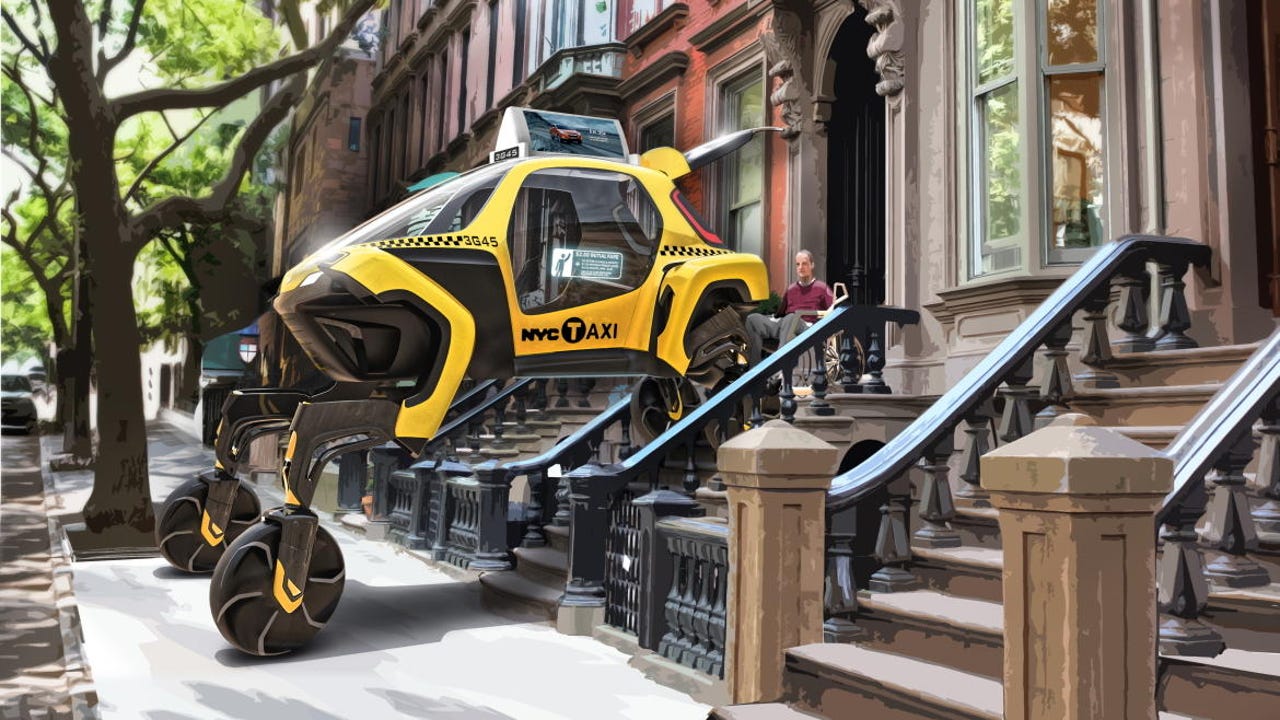Hyundai made a walking car (no, really)


Lots of cars boast that they can handle rugged terrain. This walking car concept from Hyundai puts them all to shame.
Called the Elevate UMV ("Ultimate Mobility Vehicle), the concept first debuted at CES 2019, and now it exists as a 5:1 scale prototype that's part car, part transformer, and a total drool-fest for robotics geeks watching their wildest dreams come true.
It's fitting, as we wait for flying cars, that we might first see walking cars first. There's an evolutionary logic there, and while this concept might at first elicit eye rolls, it actually makes a weird kind of sense for some pretty important use cases. The vehicle has four wheels and operates as a normal under normal driving conditions. But when it needs to access areas that normal cars never could, its extensible legs lift it and its wheels turn 90 degrees to become feet. The articulated legs then allow the car to walk forward in a quadrupedal gait like some kind of mutant cow.
The project is led by John Suh, founding director of Hyundai's New Horizons Studio. The studio takes as its goal contributing to Hyundai Motor Group's core automotive business via far flung imagination. The Elevate project was informed by the Transformer toys of the '80s and is a collaboration with Autodesk Generative Design. Autodesk seeks to streamline and accelerate the process of developing design ideas using computers to generate many times more design possibilities than a human would be capable of while accounting for trade-offs of strength, weight, cost, manufacturing complexity, and sustainability.
"Generative design helps the human mind expand the range of possibilities," says Suh. "With the help of generative design, a single designer or engineer can go through perhaps dozens or hundreds of different design iterations, so it enables them to see things that they may not have otherwise considered, and in tandem tackle complex problems. Which is to say that people still have a very important role to play in shaping the design direction. There will always be need for the human eye, the heart, and the soul as vital parts of the design process."
As Suh points out in the embedded video, the use cases for a car that walks actually make more sense than you might at first think. Search and rescue is an obvious use case, but so enabling mobility-challenged people to get to their car without the use of lifts or ramps. The real upshot of the project for Hyundai, however, is the ability to iterate designs that are lighter, more nimble, and more multipurpose, learnings from which can be fed back into production cars.
"More than 10 years ago, we identified the pain points, rework required and loss of valuable information when projects move from one phase to the next and the associated files don't play nicely in the heterogenous environments organizations so often use," says Srinath Jonnalagadda, vice president of design and manufacturing at Autodesk. "Creating a design and engineering platform that helps remove those hurdles, while also putting advanced capabilities such as generative design tools at the fingertips of designers, has been our North Star for a decade. The Elevate project is a showcase of how leaders like Hyundai can now enjoy the fruits of that vision."
It remains to be seen if we'll get a full-sized version of Elevate UMV. If we do, I call shotgun.